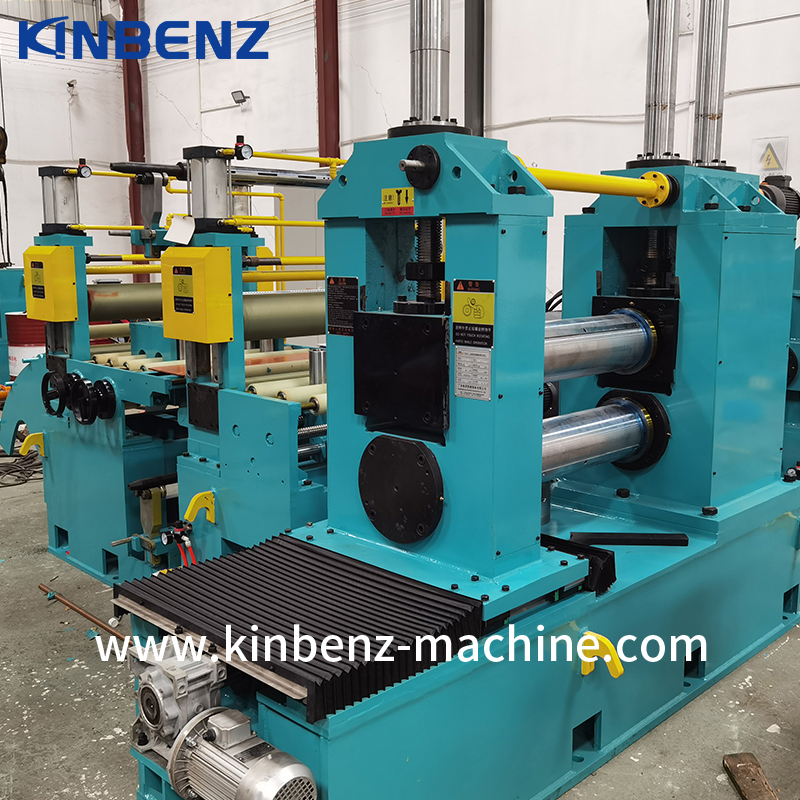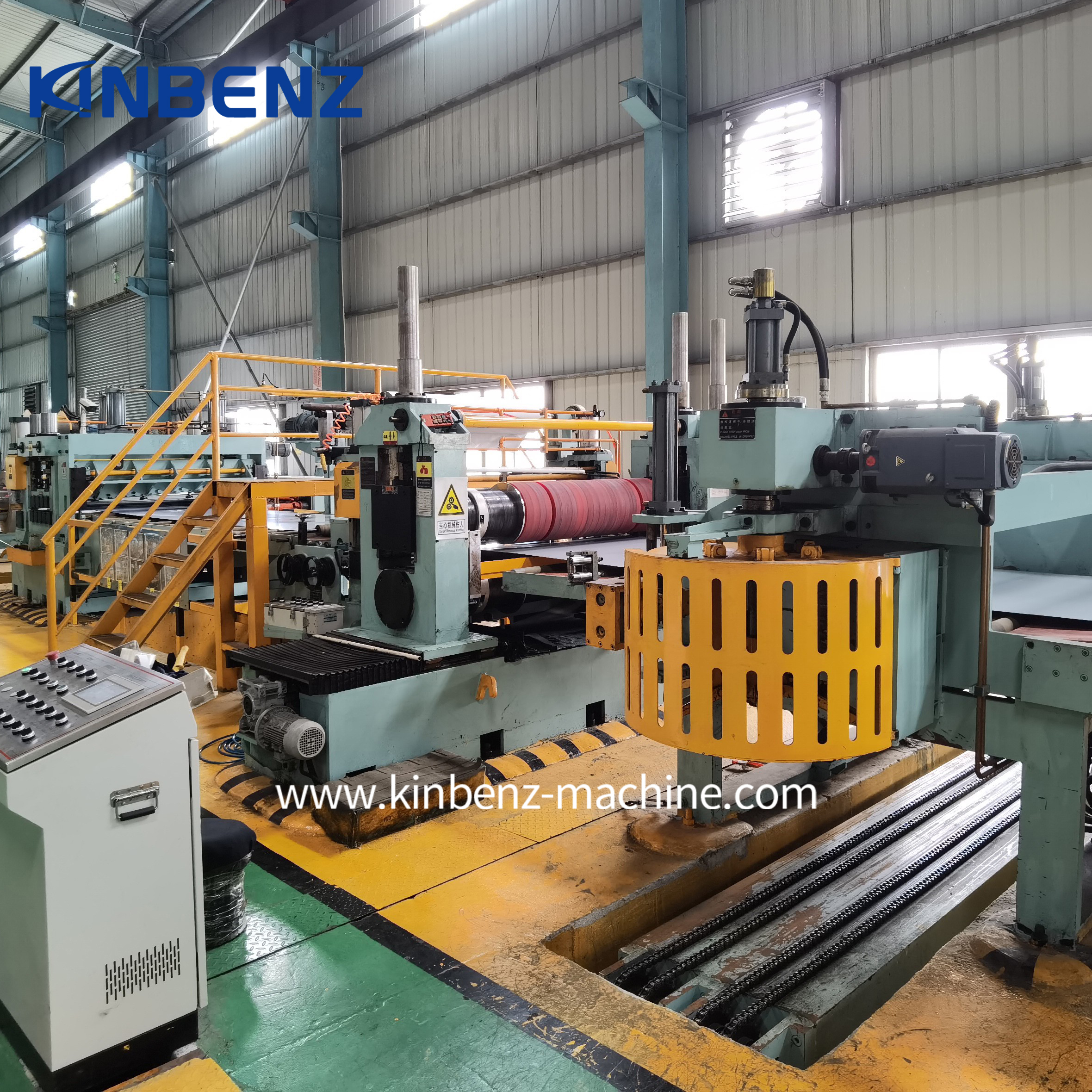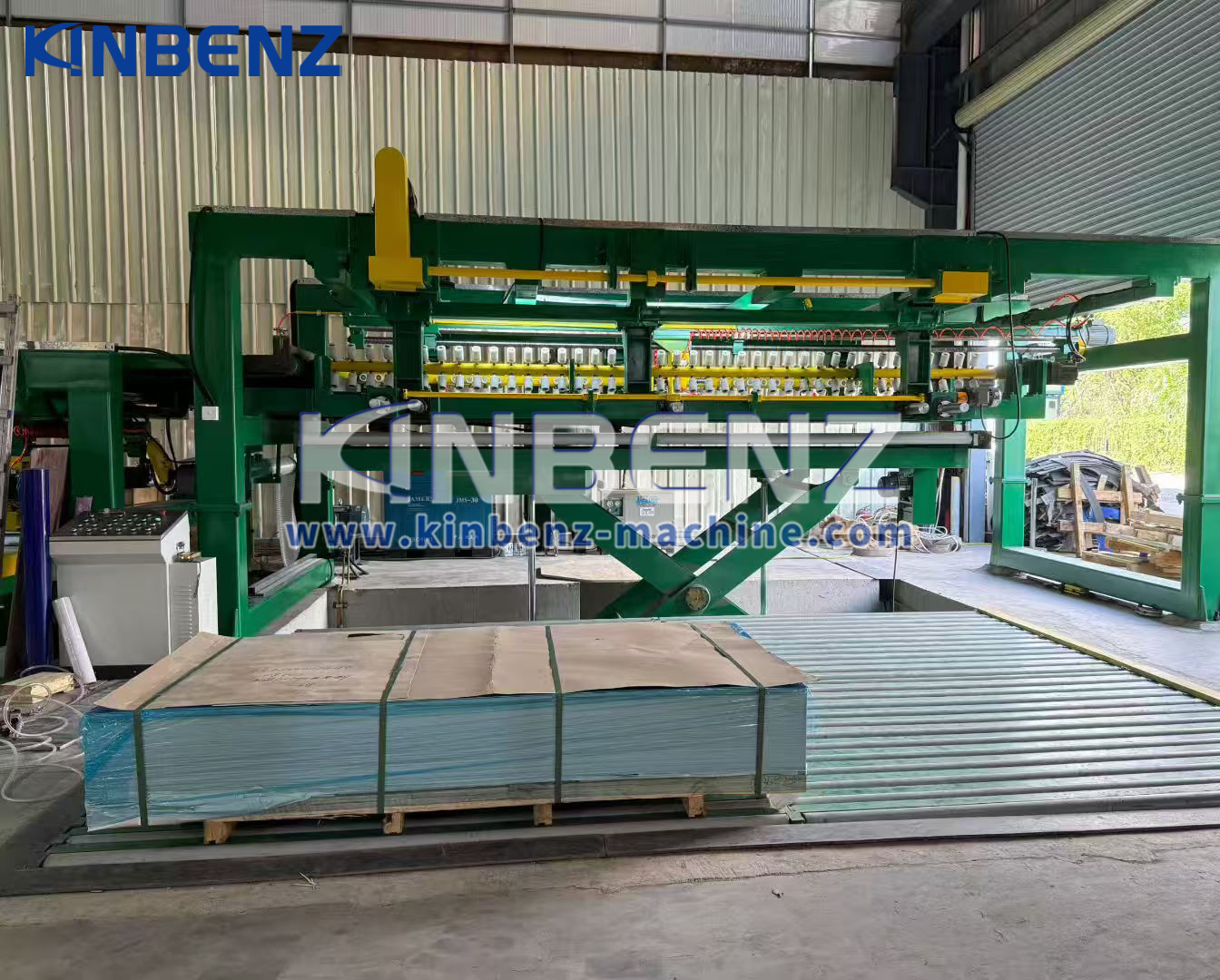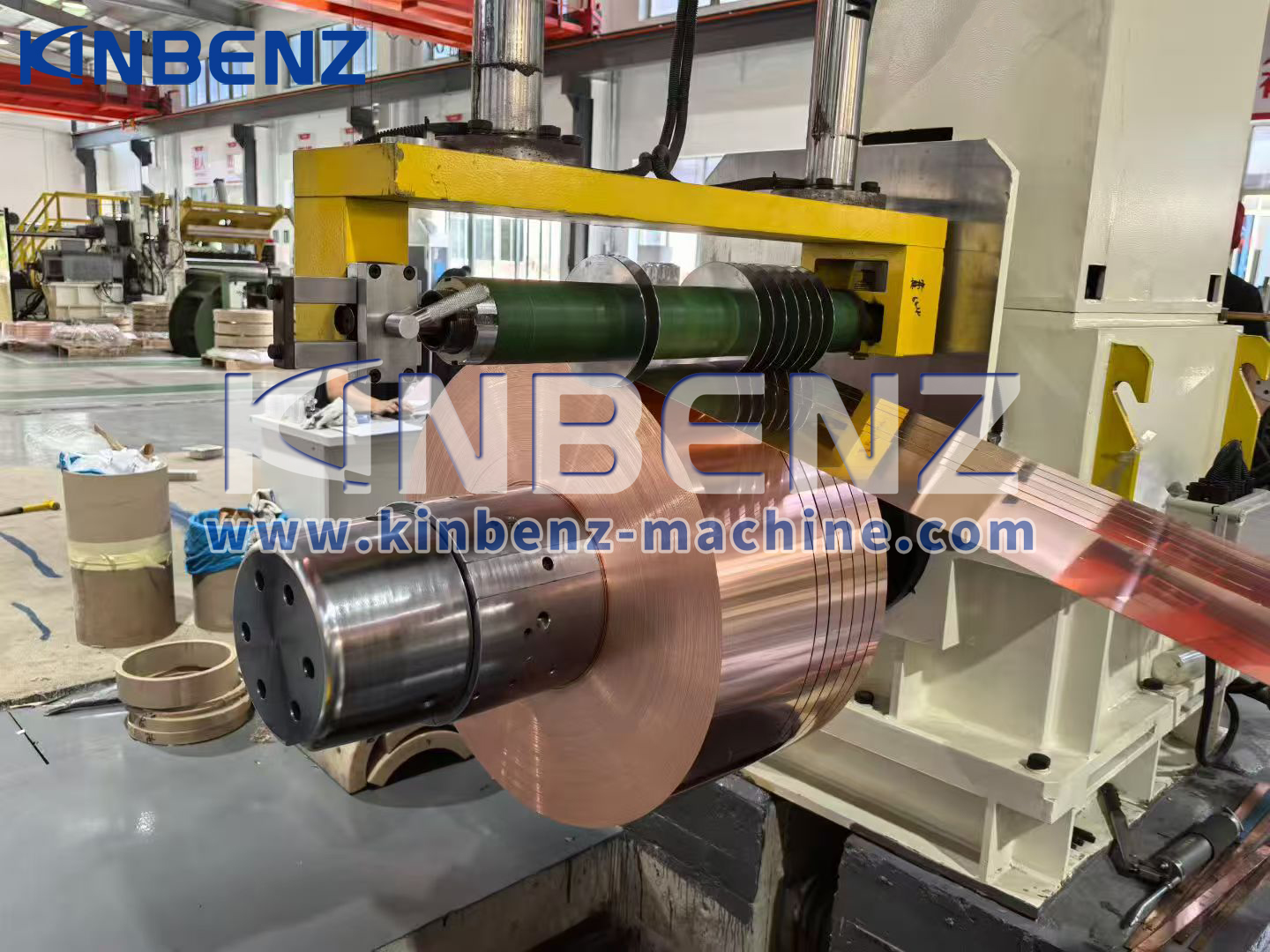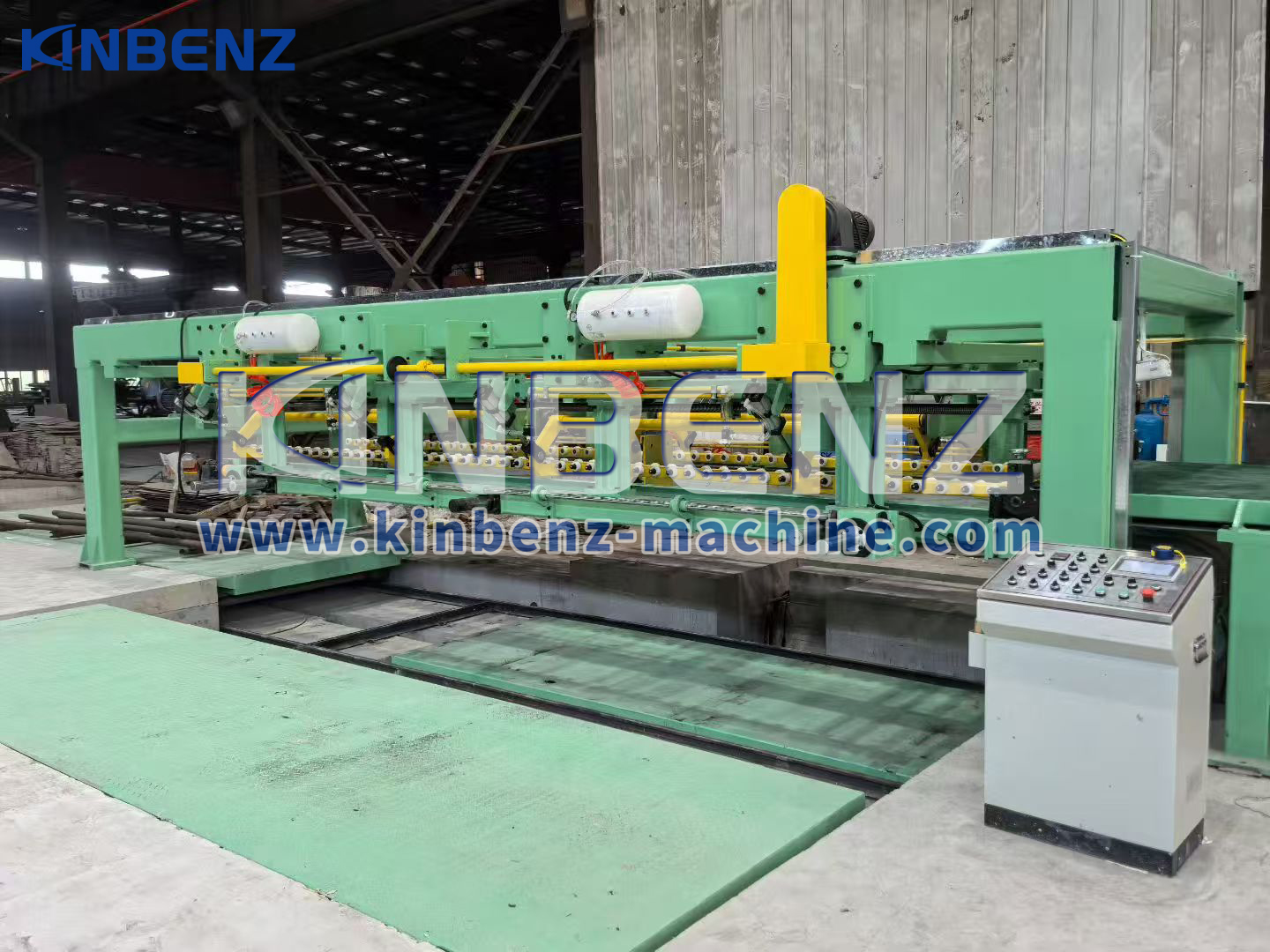|
|
Why You Need a Stainless Steel Coil Slitting Line for Modern Metal Processing
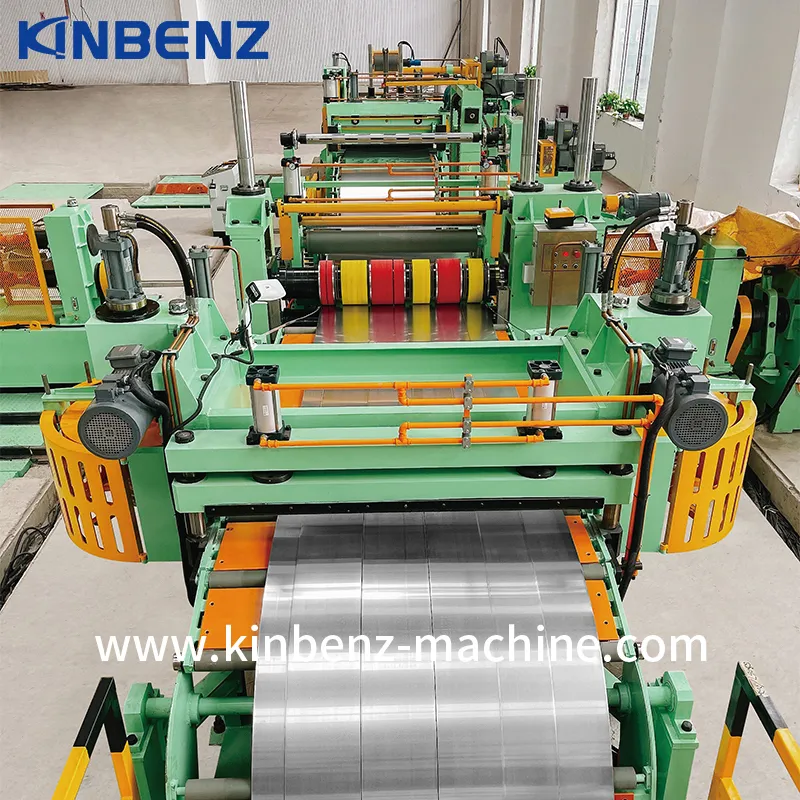
2025-08-31
Introduction: Why Slitting Line Stainless Steel Is Different
Unlike mild steel & galvanized coil, stainless steel coils are:
- Harder & stronger
- More sensitive to surface scratches
- More expensive per ton
That's why processing them - especially slitting - requires more precision, better tension control, and surface protection systems.
What Is a Stainless Steel Slitting Line?
A stainless steel coil slitting line is a processing system that uncoils, slits and rewinds stainless steel coils into narrow coils with exact dimensions.
The key parts include:
- Decoiler
- Pinch roller + leveler
- Slitter
- Scrap winder
- Tension station
- Recoiler
- Optional: Film laminator; paper collector
Kinbenz machine supprt standard coil widths up to 1600mm, thickness from 0.3-3.0mm, and high line speed up to 220m/min.
Key Applications Across Industries
Industry |
Application Examples |
|---|---|
Home Appliances |
Stainless steel back panels, casings |
Automotive |
Interior trim, exhaust parts, brackets |
Construction |
Roofing strips, decorative panels |
Kitchenware |
Sink raw material, stainless utensils |
Energy |
Solar frame materials, mounting hardware |
Benefits of Using a Stainless Steel Slitting Line
Precision Tolerance
Cut to ±0.2mm for tight coil width requirements
Surface Protection
Film laminator protects mirror/satin finishes from scratches during processing
Burr Control
Well-aligned blade shaft and proper clearance reduce burr height and rework
Reduced Downtime
Auto tension & scrap winding system ensures clean operation without manual trimming
Stainless Steel Grades Commonly Processed
Grade |
Property |
Common Use |
|---|---|---|
304 |
Corrosion-resistant, general purpose |
Appliances, construction |
316 |
Marine-grade, chemical resistant |
Food & pharma, coastal structures |
430 |
Ferritic, low cost |
Kitchenware, back panels |
201 |
High manganese, cost-effective |
Consumer goods, decorative items |
Kinbenz's Stainless Steel Slitting Line Features
- Forged 42CrMo high-hardness slitting blades, desinged for stainless applications
- Servo-controlled blade shafts & tension unit
- Optional film laminator to protect polished/mirror finishes
- Precision pre-separator unit and recoiler with tension control to avoid coil collapse
FQA:
Q: What makes slitting stainless steel harder that slitting carbon steel?
A: Stainless steel has higher tensile strength and work hardness easily, requiring stronger blades and more precise clearance.
Q: How do you prevent scratches on stainless steel coils during slitting?
Use felt tension pads, film laminators, and anti-friction conveyor rollers.
Q: How many strips can be slit at once?
It depends on coil width and strip width. As 1250mm coil width, can slit 8-20 strips of stainless steel.
Stainless steel slitting requires more than just speed - it demands finese. With its high value, surface sensitivity, and application in critical industries, a dedicated stainless steel slitting line can protect your investment and deliver reliable, accurate results.
Kinbenz's stainless slitting line is trusted by global clients for custom design, strong engineering, and full after-sales support.
Introduction: Why Slitting Line Stainless Steel Is Different
Unlike mild steel & galvanized coil, stainless steel coils are:
- Harder & stronger
- More sensitive to surface scratches
- More expensive per ton
That's why processing them - especially slitting - requires more precision, better tension control, and surface protection systems.
What Is a Stainless Steel Slitting Line?
A stainless steel coil slitting line is a processing system that uncoils, slits and rewinds stainless steel coils into narrow coils with exact dimensions.
The key parts include:
- Decoiler
- Pinch roller + leveler
- Slitter
- Scrap winder
- Tension station
- Recoiler
- Optional: Film laminator; paper collector
Kinbenz machine supprt standard coil widths up to 1600mm, thickness from 0.3-3.0mm, and high line speed up to 220m/min.
Key Applications Across Industries
Industry |
Application Examples |
|---|---|
Home Appliances |
Stainless steel back panels, casings |
Automotive |
Interior trim, exhaust parts, brackets |
Construction |
Roofing strips, decorative panels |
Kitchenware |
Sink raw material, stainless utensils |
Energy |
Solar frame materials, mounting hardware |
Benefits of Using a Stainless Steel Slitting Line
Precision Tolerance
Cut to ±0.2mm for tight coil width requirements
Surface Protection
Film laminator protects mirror/satin finishes from scratches during processing
Burr Control
Well-aligned blade shaft and proper clearance reduce burr height and rework
Reduced Downtime
Auto tension & scrap winding system ensures clean operation without manual trimming
Stainless Steel Grades Commonly Processed
Grade |
Property |
Common Use |
|---|---|---|
304 |
Corrosion-resistant, general purpose |
Appliances, construction |
316 |
Marine-grade, chemical resistant |
Food & pharma, coastal structures |
430 |
Ferritic, low cost |
Kitchenware, back panels |
201 |
High manganese, cost-effective |
Consumer goods, decorative items |
Kinbenz's Stainless Steel Slitting Line Features
- Forged 42CrMo high-hardness slitting blades, desinged for stainless applications
- Servo-controlled blade shafts & tension unit
- Optional film laminator to protect polished/mirror finishes
- Precision pre-separator unit and recoiler with tension control to avoid coil collapse
FQA:
Q: What makes slitting stainless steel harder that slitting carbon steel?
A: Stainless steel has higher tensile strength and work hardness easily, requiring stronger blades and more precise clearance.
Q: How do you prevent scratches on stainless steel coils during slitting?
Use felt tension pads, film laminators, and anti-friction conveyor rollers.
Q: How many strips can be slit at once?
It depends on coil width and strip width. As 1250mm coil width, can slit 8-20 strips of stainless steel.
Stainless steel slitting requires more than just speed - it demands finese. With its high value, surface sensitivity, and application in critical industries, a dedicated stainless steel slitting line can protect your investment and deliver reliable, accurate results.
Kinbenz's stainless slitting line is trusted by global clients for custom design, strong engineering, and full after-sales support.





